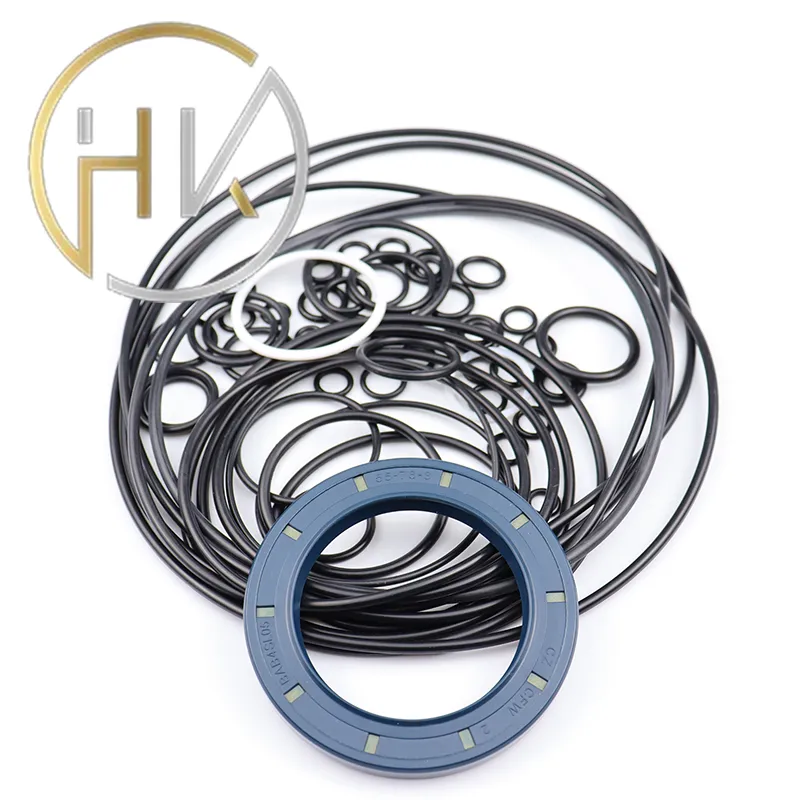des. . 18, 2024 09:06 Back to list
dust wiper seal
Understanding Dust Wiper Seals An Essential Component for Machinery Longevity
In the world of industrial machinery and equipment, maintaining optimal performance and longevity is crucial. One often overlooked component that plays a vital role in this aspect is the dust wiper seal. These seals are not just simple accessories; they serve a critical function in ensuring machinery operates smoothly, preventing wear and tear that could lead to costly downtimes and repairs.
What is a Dust Wiper Seal?
A dust wiper seal is a device installed on the exterior of a hydraulic cylinder or rod. Its primary purpose is to keep contaminants, such as dust, dirt, grease, and other foreign particles, from entering the hydraulic system. This contamination can cause significant damage to the internal components of hydraulic equipment, leading to reduced efficiency and potential failure.
Importance of Dust Wiper Seals
1. Protection Against Contaminants The foremost function of a dust wiper seal is to create a barrier that prevents dirt and debris from entering the hydraulic system. Contaminants can lead to abrasion on piston rods, which can damage the seals and other moving parts, hence compromising the overall system performance.
2. Enhancing Equipment Longevity By effectively keeping contaminants at bay, dust wiper seals extend the life of hydraulic cylinders and other machinery components. This longevity translates to less frequent replacements and repairs, resulting in savings for businesses in the long run.
3. Reducing Maintenance Costs Maintenance of machinery can be a significant financial burden. By preventing dirt ingress, dust wiper seals minimize wear and tear, leading to reduced maintenance needs and costs. This means that companies can allocate resources to other critical areas rather than focusing solely on repairs.
4. Maintaining Operational Efficiency Machinery that operates with clean internal components runs more efficiently. Dust wiper seals ensure that hydraulic systems function with optimal performance, thereby maximizing productivity and reducing the risk of operational failures that can lead to downtime.
Types of Dust Wiper Seals
dust wiper seal

Dust wiper seals come in various designs and materials, each suited for specific applications. Some common types include
- Rubber Seals These are widely used due to their excellent elasticity and ability to conform to surfaces, providing a good seal against contaminants.
- Metal Reinforced Seals Used in heavy-duty applications, these seals provide additional strength and durability, making them suitable for harsh environments.
- Polyurethane Seals Known for their high abrasion resistance, polyurethane seals are often used in applications where there is a risk of high levels of particulates.
Installation and Maintenance
Proper installation and regular maintenance of dust wiper seals are crucial for their effectiveness. For installation, it’s important to ensure that the seal is fitted snugly without any gaps that could allow contaminants to enter.
Regular inspection of the seals for signs of wear or damage is also essential. If a seal shows signs of deterioration, it should be replaced immediately to prevent contamination of the hydraulic system. Depending on the operating environment and machinery use, the frequency of inspections may vary, so understanding the specific requirements of your equipment is vital.
Conclusion
In conclusion, dust wiper seals are a small yet significant component of hydraulic systems that should not be underestimated. Their role in protecting against contaminants, enhancing equipment longevity, reducing maintenance costs, and maintaining operational efficiency is invaluable. To ensure that your machinery performs at its best, investing in high-quality dust wiper seals and adhering to proper maintenance practices is essential. By doing so, you will safeguard your investment, optimize performance, and contribute to the long-term success of your operations. Remember, in the world of machinery, an ounce of prevention truly is worth a pound of cure.
-
TCN Oil Seal Metal Ring Reinforcement for Heavy Machinery
NewsJul.25,2025
-
Rotary Lip Seal Spring-Loaded Design for High-Speed Applications
NewsJul.25,2025
-
Hydraulic Cylinder Seals Polyurethane Material for High-Impact Jobs
NewsJul.25,2025
-
High Pressure Oil Seal Polyurethane Coating Wear Resistance
NewsJul.25,2025
-
Dust Proof Seal Double Lip Design for Construction Equipment
NewsJul.25,2025
-
Hub Seal Polyurethane Wear Resistance in Agricultural Vehicles
NewsJul.25,2025
-
The Trans-formative Journey of Wheel Hub Oil Seals
NewsJun.06,2025
Products categories
















